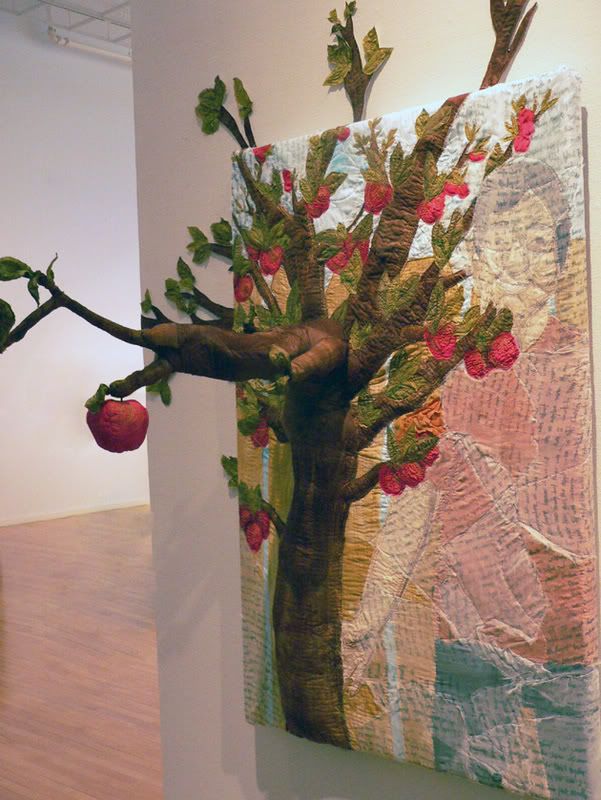1) Two- and three-dimensional
Three-dimensional pieces, however, do have depth as well as height and width. An example of three-dimensional artwork is seen in a piece of art by a student from Truman State University. This piece is called There Were All These Ripe Apples.
2) Representational and Nonrepresentational
Representational art (or figurative art) is when an artist tries to create someth ing that represents what we see in the real world. However, there are many different degrees of realism in this type of art: absolute realism is an accurate depiction of the world around us; idealization is when an artist transforms what is seen in the real world into his or her own perfected version of the world, as in Pierre-Auguste Cot's Springtime; stylization is when an artist emphasizes the design of something rather than creat
ing that represents what we see in the real world. However, there are many different degrees of realism in this type of art: absolute realism is an accurate depiction of the world around us; idealization is when an artist transforms what is seen in the real world into his or her own perfected version of the world, as in Pierre-Auguste Cot's Springtime; stylization is when an artist emphasizes the design of something rather than creat ing an exact representation of what they see; and abstraction is made by extracting the essence of real objects rather than an exact representation, such as seen in Georgia O'Keeffe's Jack in the Pulpit No. IV.
ing an exact representation of what they see; and abstraction is made by extracting the essence of real objects rather than an exact representation, such as seen in Georgia O'Keeffe's Jack in the Pulpit No. IV.
Nonrepresentational art (or nonobjective art) is where an artist portrays things, not from the physical world, but purely as elements of design. An example of this type of artwork is visible in Jiha Moon's Edge of Spring.
3) Fine and Applied
Fine art is art that is simply produced to be seen and experienced on an aesthetic level. It is produced to evoke different responses in viewers by how the work makes them feel emotionally, intellectually, or spiritually. Applied art, however, as mentioned before, is art that is created simply to serve some function, such as a chair is created to sit in or a vase is created to hold flowers. Though these pieces may be considered just as everyday objects, they are in fact pieces of art and can have a vast amount of variation in the design of such objects.
4) Public and Private
Public art is art that is funded by the government and public institutions for display at such places as museums, businesses, or simply outside venues for passerby to enjoy. Private art, in contrast, is art that is not owned by the government or a museum, but is art created and kept by an independent artist for intimate view and opinions.
Those are some of the different types of art seen in the world today. There are also many different contents in art, such as sociopolitical content, pieces depicting power and propaganda, pieces created for spiritual purposes, from inner experiences, and simply for the pursuit beauty. And from this chapter on understanding art, we have come to recognize and hopefully appreciate more these many different aspects to such an intriguing subject.


No comments:
Post a Comment